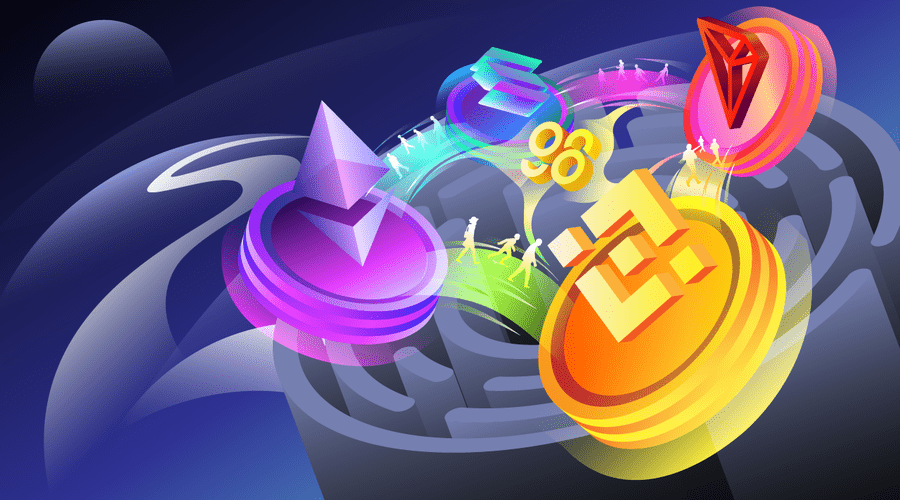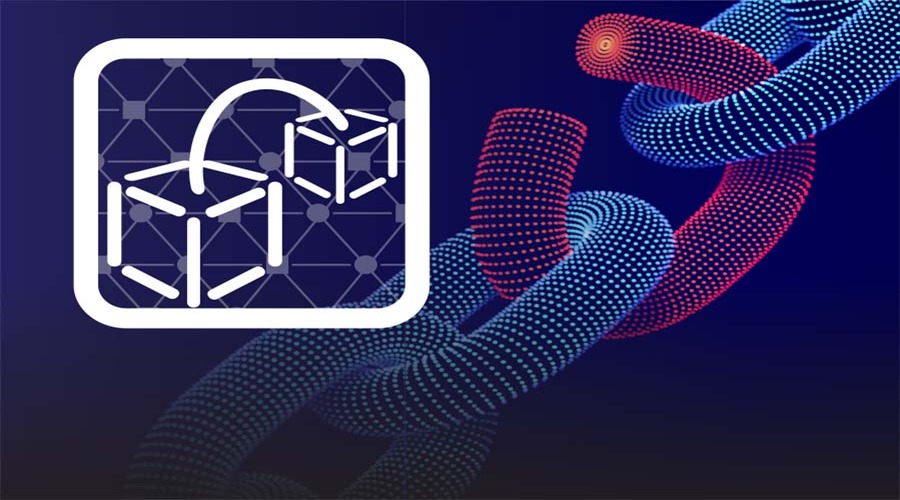In today’s digital landscape, the world of cryptocurrencies and blockchain technology has expanded rapidly. As a result, there is a growing need for seamless interoperability between different blockchain networks. Cross-chain bridges have emerged as a solution to this challenge, enabling the transfer of various digital assets across different blockchains. In this article, we will explore the concept of cross-chain bridges, their importance in achieving asset interoperability, and how they enable cross-chain transfers of digital assets.
The growing adoption of cross-chain bridges and the increasing demand for asset interoperability highlight the importance of these technological advancements. As more blockchain networks and digital assets emerge, the need for seamless transfers between them becomes even more crucial.
One of the key benefits of cross-chain bridges is their ability to enhance asset liquidity. By enabling digital assets to flow freely between different blockchain networks, these bridges contribute to the overall liquidity of the decentralized ecosystem. Increased liquidity fosters a more vibrant market environment and provides users with improved trading opportunities.
Moreover, the interoperability facilitated by cross-chain bridges opens up a plethora of new use cases for digital assets. Developers can leverage assets from different blockchains to create innovative decentralized applications (DApps) that were previously limited by the constraints of a single blockchain network. This expansion of possibilities promotes creativity, collaboration, and the growth of the blockchain ecosystem.
Cross-chain bridges also play a vital role in reducing counterparty risk. Traditional asset transfers often involve intermediaries, introducing additional points of potential failure or manipulation. In contrast, cross-chain transfers occur directly between participating blockchains, minimizing the reliance on intermediaries and mitigating counterparty risk. This peer-to-peer nature of asset transfers increases trust and transparency in the process.
However, the development and adoption of cross-chain bridges are not without challenges. Security concerns pose a significant risk to the integrity of asset transfers. Smart contracts, which facilitate these transfers, must be thoroughly audited and secured to prevent vulnerabilities that could be exploited by bad actors. Additionally, the underlying blockchain networks must have robust security measures in place to safeguard the assets being transferred.
Scalability is another crucial aspect that must be addressed. As the number of blockchain networks and digital assets continues to grow, cross-chain bridges must be capable of handling a high volume of transactions efficiently. Scaling solutions, such as layer-two solutions or advancements in consensus algorithms, play a vital role in ensuring the scalability of cross-chain bridges.
Standardization is also an important factor in the successful implementation of cross-chain bridges. Without common protocols and interoperability standards, integrating and operating these bridges across various blockchain networks becomes complex and inefficient. Collaborative efforts among blockchain projects and industry stakeholders are crucial in establishing standardized frameworks that streamline the interoperability process.
Looking ahead, the future of cross-chain bridges appears promising. As blockchain technology continues to evolve, we can expect more advanced and secure solutions to emerge. The ongoing research and development efforts in the field of interoperability are driving innovation and pushing the boundaries of what is possible.
In conclusion, cross-chain bridges are revolutionizing the way digital assets are transferred and utilized in the blockchain ecosystem. By enabling asset interoperability, these bridges unlock new opportunities for decentralized finance, expand the use cases of digital assets, and foster a more liquid and efficient market environment. While challenges exist, the continuous development and adoption of cross-chain bridges will shape the future of blockchain technology, enabling a more interconnected and innovative decentralized ecosystem.
Introduction
The decentralized nature of blockchain technology has led to the creation of numerous blockchain networks, each with its unique features and functionalities. However, these networks often operate in isolation, making it challenging to transfer digital assets seamlessly between them. Cross-chain bridges have emerged as a solution to this problem, allowing users to transfer digital assets from one blockchain network to another.
Understanding Cross-Chain Bridges
Cross-chain bridges are protocols or systems that facilitate the transfer of digital assets across different blockchain networks. These bridges act as connectors, enabling interoperability between otherwise isolated blockchains. They accomplish this by creating a secure and transparent channel for asset transfers between blockchains, overcoming the limitations of individual blockchain networks.
The Need for Asset Interoperability
Asset interoperability is crucial for the growth and development of the blockchain ecosystem. Currently, the majority of digital assets are confined to specific blockchain networks, limiting their potential use cases and hindering innovation. Cross-chain bridges enable the seamless transfer of assets between blockchains, unlocking new possibilities for decentralized finance (DeFi), decentralized exchanges (DEXs), and other blockchain-based applications.
How Cross-Chain Bridges Work
Cross-chain bridges utilize various mechanisms to facilitate the transfer of digital assets. One common approach is to employ smart contracts that act as escrow agents, holding assets on one blockchain while issuing corresponding assets on another blockchain. These smart contracts ensure the integrity and security of the transferred assets, making cross-chain transfers reliable and trustworthy.

Benefits of Cross-Chain Bridges
- Enhanced Asset Liquidity: Cross-chain bridges enable increased liquidity by allowing digital assets to flow freely between different blockchain networks. This opens up opportunities for seamless trading and improved market efficiency.
- Expanded Use Cases: Asset interoperability through cross-chain bridges unlocks new use cases for digital assets. For example, a decentralized application (DApp) on one blockchain can utilize assets from a different blockchain, expanding the possibilities for innovation.
- Reduced Counterparty Risk: Cross-chain bridges minimize counterparty risk by eliminating the need for intermediaries in asset transfers. Transactions occur directly between the participating blockchains, reducing the likelihood of fraud or manipulation.
Challenges and Limitations
While cross-chain bridges offer significant benefits, they also face challenges and limitations that need to be addressed. Some of these include:
- Security Concerns: Ensuring the security of cross-chain transfers is crucial. Vulnerabilities in smart contracts or the underlying blockchain networks can lead to potential risks, such as asset theft or manipulation.
- Scalability: As the number of blockchain networks and digital assets continues to grow, scalability becomes a critical factor. Cross-chain bridges must be able to handle a high volume of transactions efficiently.
- Standardization: The lack of standardized protocols and interoperability standards poses a challenge for cross-chain bridges. Establishing common frameworks can streamline the integration and operation of these bridges.
Examples of Cross-Chain Bridges
Several projects and platforms have emerged to address the need for cross-chain asset transfers. Some notable examples include:
- Polygon (previously Matic): Polygon provides a framework for building and connecting Ethereum-compatible blockchains. It enables cross-chain transfers through its PoS bridge, allowing assets to move between Ethereum and Polygon blockchains.
- Cosmos: Cosmos is a decentralized network of independent blockchains. It offers a robust cross-chain framework called the Inter-Blockchain Communication (IBC) protocol, enabling interoperability between different blockchains within the Cosmos ecosystem.
- Polkadot: Polkadot is a multi-chain platform that allows different blockchains to interoperate. It uses a relay chain and parachains to facilitate cross-chain communication and asset transfers.
Future Outlook
The development of cross-chain bridges is an ongoing process, driven by the growing demand for asset interoperability. As blockchain technology continues to evolve, we can expect more advanced and secure cross-chain solutions to emerge. Standardization efforts and collaboration between blockchain networks will play a vital role in achieving seamless asset transfers across different ecosystems. In the future, cross-chain bridges are poised to play a pivotal role in the blockchain industry. With ongoing advancements in technology, security, and standardization, we can anticipate more robust and seamless interoperability between different blockchain networks. This will further fuel innovation, expand the possibilities for asset transfers, and drive the widespread adoption of decentralized applications.
Conclusion
Cross-chain bridges have become essential components of the blockchain ecosystem, enabling the transfer of digital assets across different blockchain networks. By promoting asset interoperability, these bridges unlock new use cases and enhance liquidity in the decentralized finance space. While challenges and limitations persist, the continuous development and adoption of cross-chain bridges will shape the future of blockchain technology, paving the way for a more interconnected and efficient ecosystem.
FAQs
Q1: Are cross-chain bridges secure? Cross-chain bridges strive to ensure the security of asset transfers between blockchains. However, vulnerabilities in smart contracts or blockchain networks can pose risks. It is essential to use well-audited and trusted cross-chain bridge solutions to minimize security concerns.
Q2: Can any digital asset be transferred via cross-chain bridges? In theory, cross-chain bridges can support the transfer of various digital assets. However, the compatibility and support for specific assets depend on the design and capabilities of the cross-chain bridge protocol.
Q3: How do cross-chain bridges impact decentralized finance (DeFi)? Cross-chain bridges have a significant impact on DeFi by increasing liquidity and expanding the range of assets available for use. They enable the seamless integration of assets from different blockchain networks, enhancing the functionality and efficiency of DeFi applications.
Q4: What role does standardization play in cross-chain bridges? Standardization is crucial for the widespread adoption and interoperability of cross-chain bridges. Common protocols and standards enable seamless integration between different blockchain networks, making cross-chain transfers more accessible and efficient.
Q5: Where can I learn more about cross-chain bridges and asset interoperability? For more information about cross-chain bridges and asset interoperability, you can explore resources provided by blockchain projects such as Polygon, Cosmos, and Polkadot. Additionally, industry publications and blockchain-focused websites are valuable sources of information.




